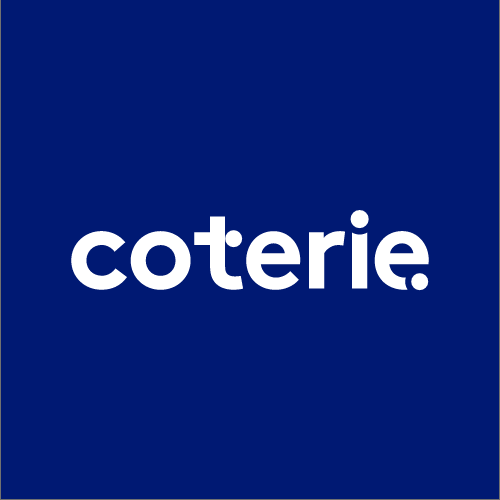

Coterie Marketing Ltd

United Kingdom, United Kingdom
January 2025
Advertising & market research
Service with Minor Environmental Footprint
United Kingdom
We exist to enable channel, partner and ecosystem professionals… To enable means to give power, competence or ability. And for professionals working within an ecosystem, that is just what we do. Driven to make the roles of those working in partner, channel and ecosystem roles easier; we bring your products and services to life through our services, connect you with like minded people and equip you and your teams to become great practitioners. Why? We believe the role of ecosystem professionals has been overlooked for too long. The ‘overwhelmed ecosystem professional’ is someone we’ve worked with many times before. For over ten years we’ve been operating as an extension of our client’s teams to identify challenges, develop solutions and deliver results. In doing so, we’ve had the opportunity to develop proven models and methodologies, take part in research, and find new ways to streamline processes, add value and drive ROI for our clients. But what about those who can’t access our services? Who exists to help them? Through Coterie Connect and Coterie Academy, we do.
Overall B Impact Score
Governance 19.4
Governance evaluates a company's overall mission, engagement around its social/environmental impact, ethics, and transparency. This section also evaluates the ability of a company to protect their mission and formally consider stakeholders in decision making through their corporate structure (e.g. benefit corporation) or corporate governing documents.
What is this? A company with an Impact Business Model is intentionally designed to create a specific positive outcome for one of its stakeholders - such as workers, community, environment, or customers.
Workers 36.4
Workers evaluates a company’s contributions to its employees’ financial security, health & safety, wellness, career development, and engagement & satisfaction. In addition, this section recognizes business models designed to benefit workers, such as companies that are at least 40% owned by non-executive employees and those that have workforce development programs to support individuals with barriers to employment.
Community 18.8
Community evaluates a company’s engagement with and impact on the communities in which it operates, hires from, and sources from. Topics include diversity, equity & inclusion, economic impact, civic engagement, charitable giving, and supply chain management. In addition, this section recognizes business models that are designed to address specific community-oriented problems, such as poverty alleviation through fair trade sourcing or distribution via microenterprises, producer cooperative models, locally focused economic development, and formal charitable giving commitments.
Environment 7.0
Environment evaluates a company’s overall environmental management practices as well as its impact on the air, climate, water, land, and biodiversity. This includes the direct impact of a company’s operations and, when applicable its supply chain and distribution channels. This section also recognizes companies with environmentally innovative production processes and those that sell products or services that have a positive environmental impact. Some examples might include products and services that create renewable energy, reduce consumption or waste, conserve land or wildlife, provide less toxic alternatives to the market, or educate people about environmental problems.
Customers 5.0
Customers evaluates a company’s stewardship of its customers through the quality of its products and services, ethical marketing, data privacy and security, and feedback channels. In addition, this section recognizes products or services that are designed to address a particular social problem for or through its customers, such as health or educational products, arts & media products, serving underserved customers/clients, and services that improve the social impact of other businesses or organizations.